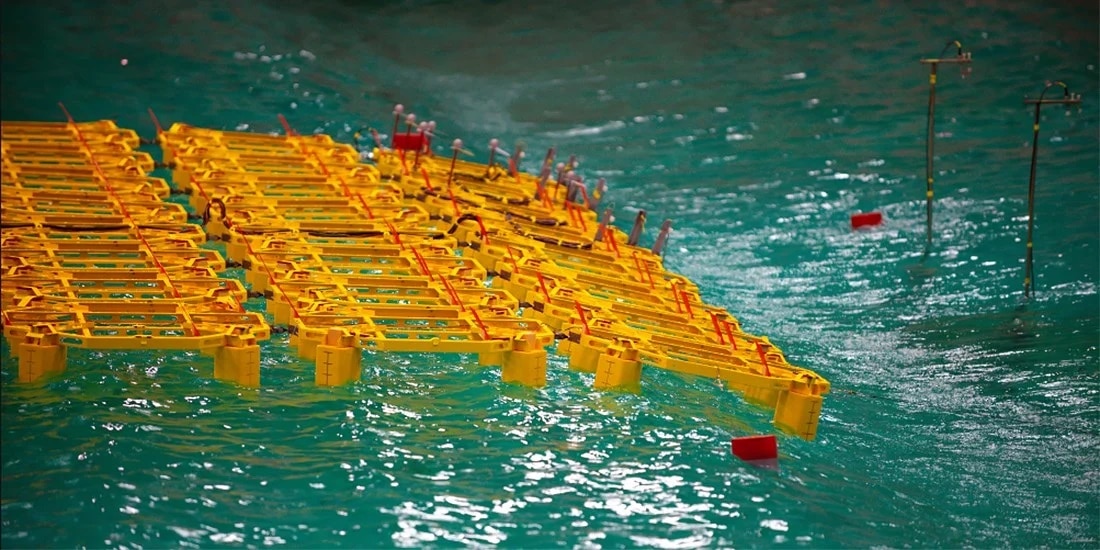Norwegian independent research organization Sintef has been tasked by Norwegian energy giant Equinor, and Vollsveien-based engineering specialist Moss Maritime – a unit of Italian gas contractor Saipem – with testing a model of a prototype of an offshore floating solar plant that Equinor and Saipem want to bring to offshore waters.
The test was conducted on a floating structure with 64 modules on a 1:13 scale, in an artificial ocean basin in which waves, wind, and currents can be simulated in real-time. The model of the floating array was equipped with sensors that collected wave information, movement and loads in the mooring and connection points. Moss Maritime is using these data to calibrate its numerical model, which will later be used to design and optimize the real installation.
The first test, Sintex experts stated, showed the floating system design for offshore location is able to withstand the simulated, difficult environmental conditions of the Norwegian Sea, where the model should be applied for a pilot project under development by Equinor off the island of Froya, near Trondheim.

Image: Sintef
“Today's concepts are mostly designed for lakes and hydropower reservoirs and many of them would fall short if they were exposed to waves,” said Øyvind Hellan, vice president for research, ships and ocean structures at Sintef. “Our goal is to expand the pilot plant to become a full-scale research and development facility.”
This installation should be an 80mx80m floating array with panels installed at a height of less than three meters above the water surface. Its anchoring system is claimed to give the installation enough freedom to cope with the waves.
Equinor intends to measure the plant's power production to assess how harsh weather conditions and rough waters affect its performance. “If we succeed here, we can succeed anywhere,” said, in January, Hanne Wigum, the head of Equinor's solar and wind tech unit.
Equinor and Saipem signed an agreement in March to jointly develop a floating solar panel park technological solution for near-coastal applications.
This content is protected by copyright and may not be reused. If you want to cooperate with us and would like to reuse some of our content, please contact: editors@pv-magazine.com.




1 comment
By submitting this form you agree to pv magazine using your data for the purposes of publishing your comment.
Your personal data will only be disclosed or otherwise transmitted to third parties for the purposes of spam filtering or if this is necessary for technical maintenance of the website. Any other transfer to third parties will not take place unless this is justified on the basis of applicable data protection regulations or if pv magazine is legally obliged to do so.
You may revoke this consent at any time with effect for the future, in which case your personal data will be deleted immediately. Otherwise, your data will be deleted if pv magazine has processed your request or the purpose of data storage is fulfilled.
Further information on data privacy can be found in our Data Protection Policy.